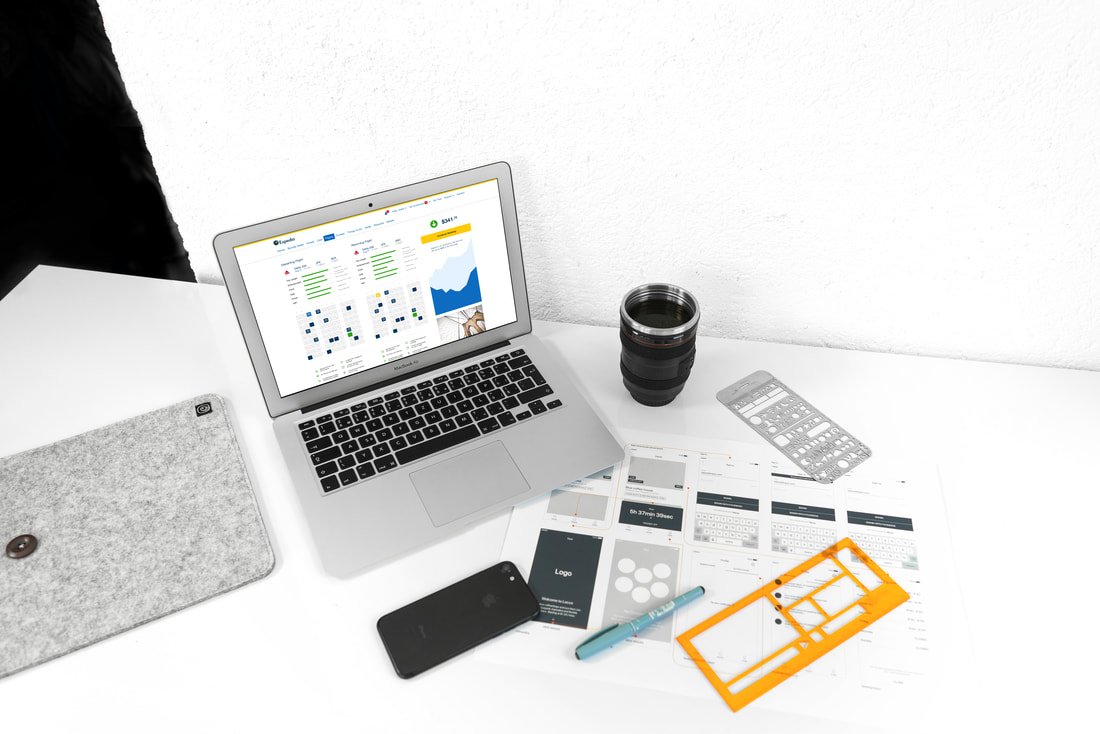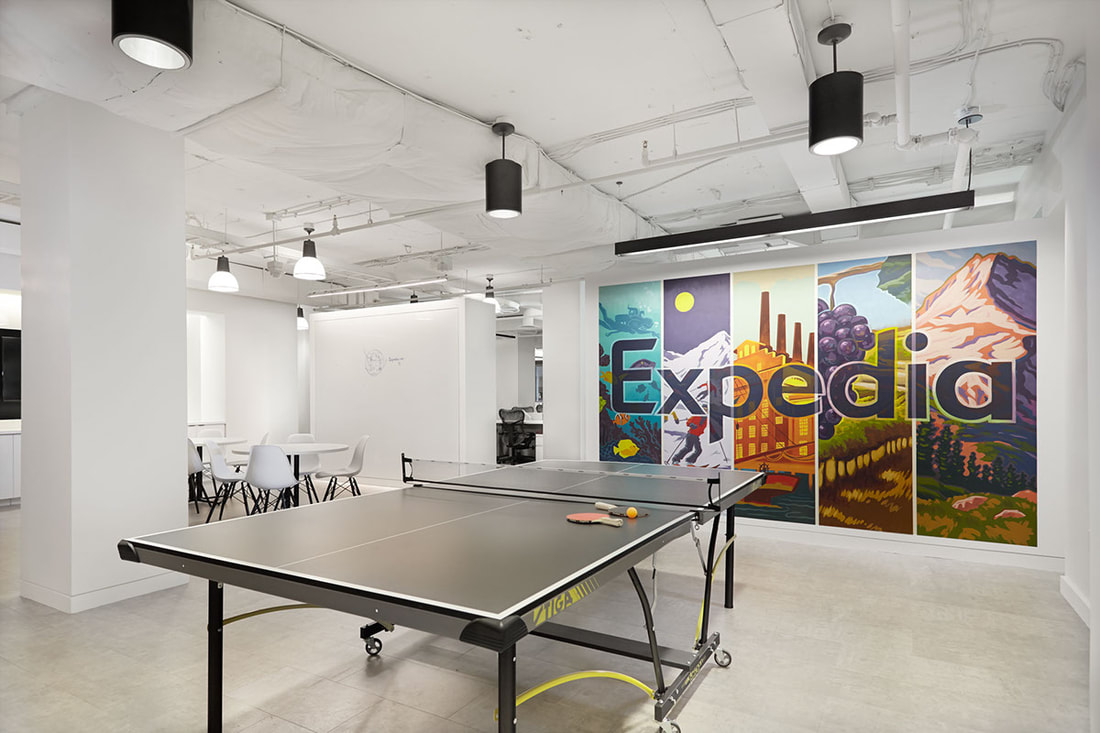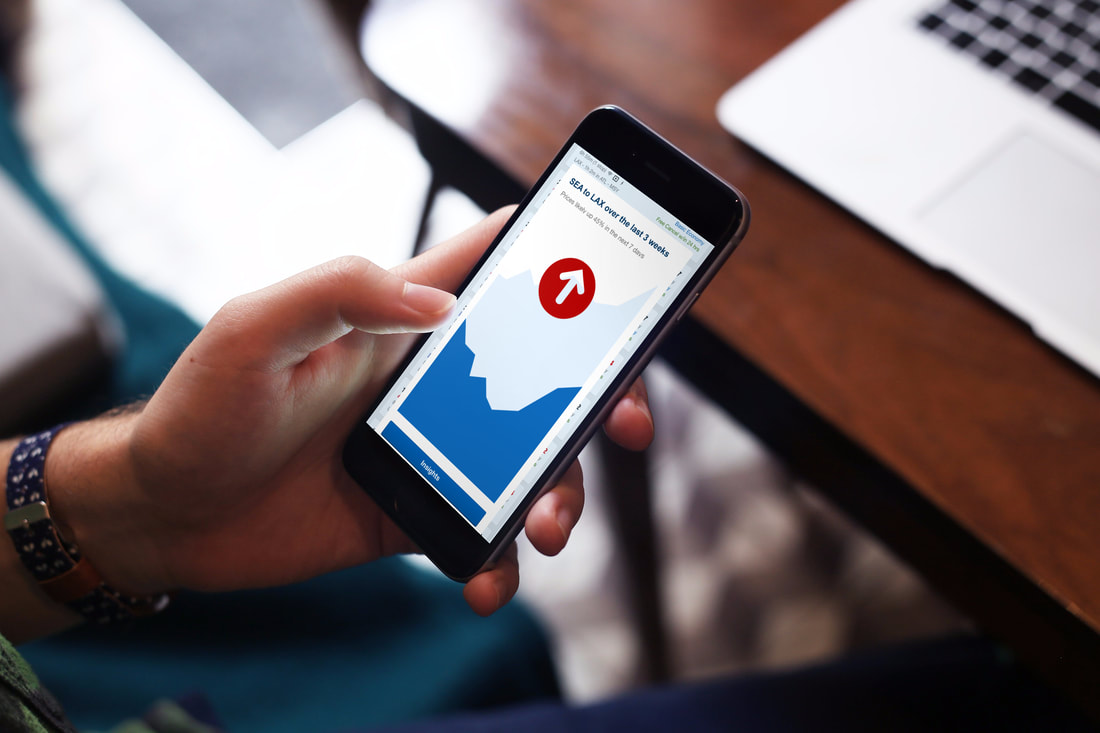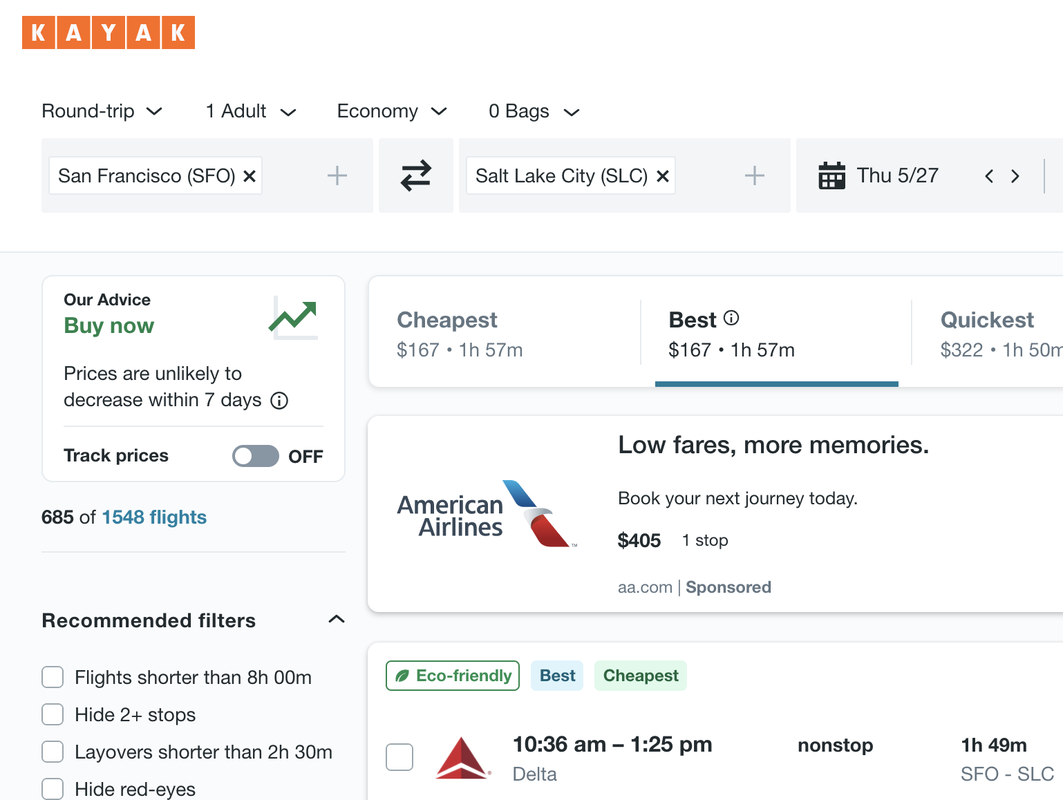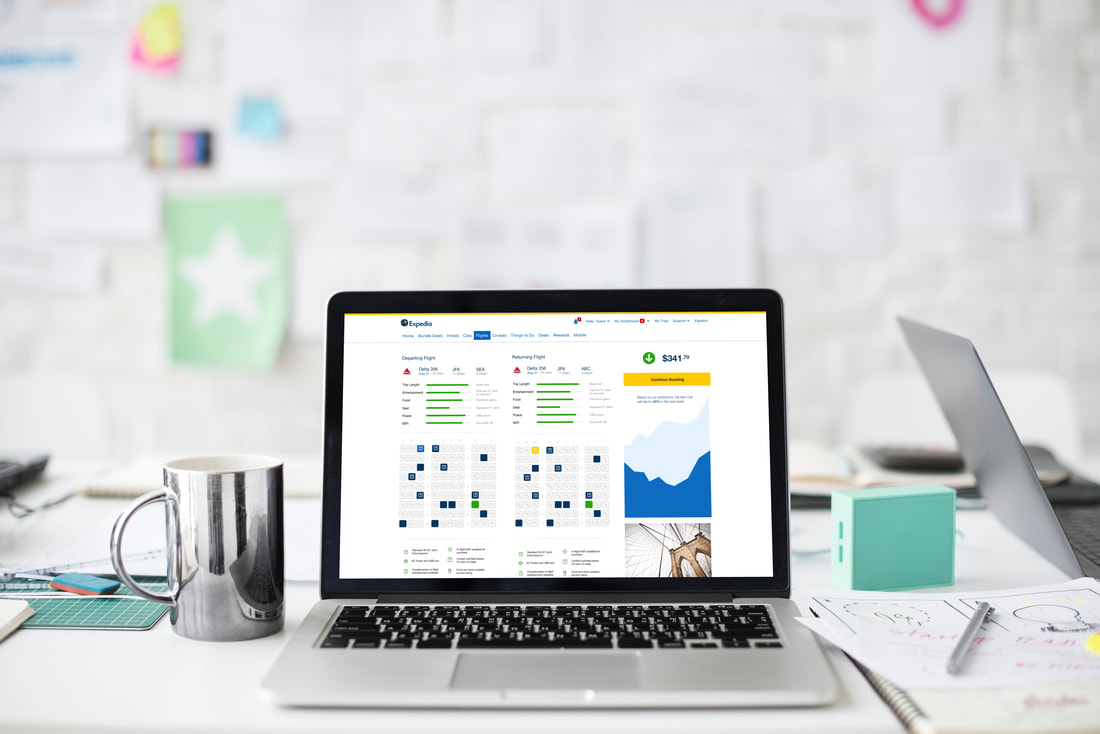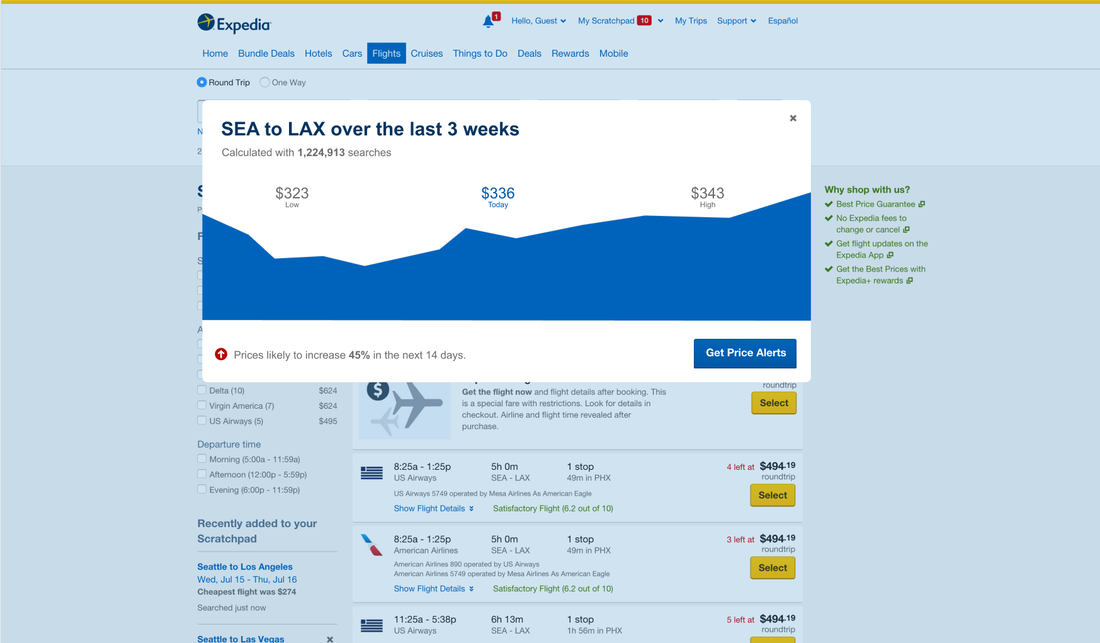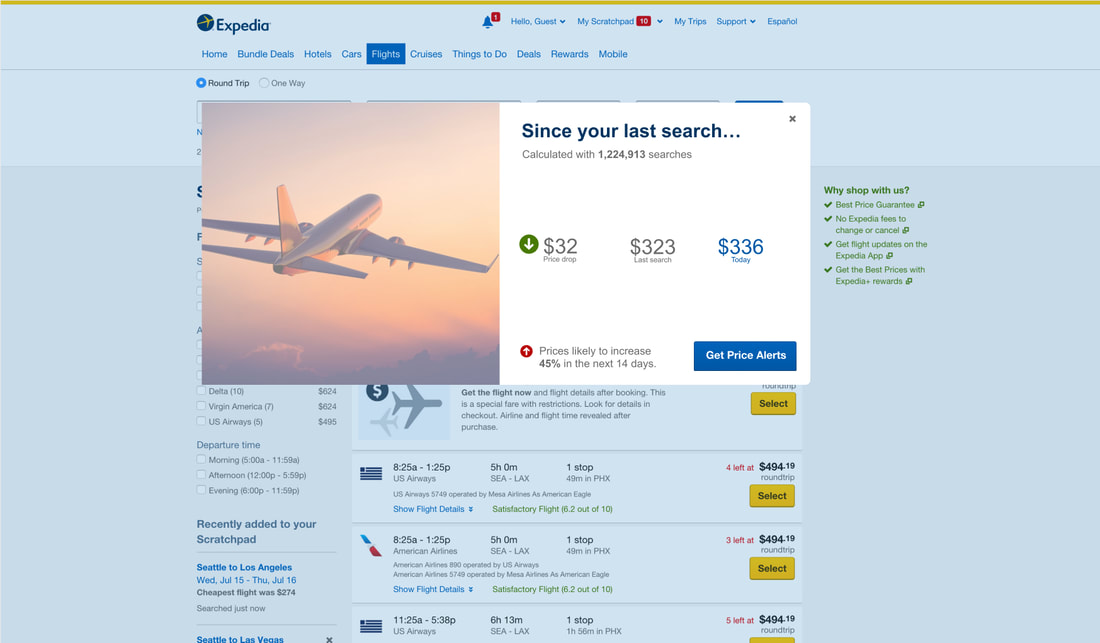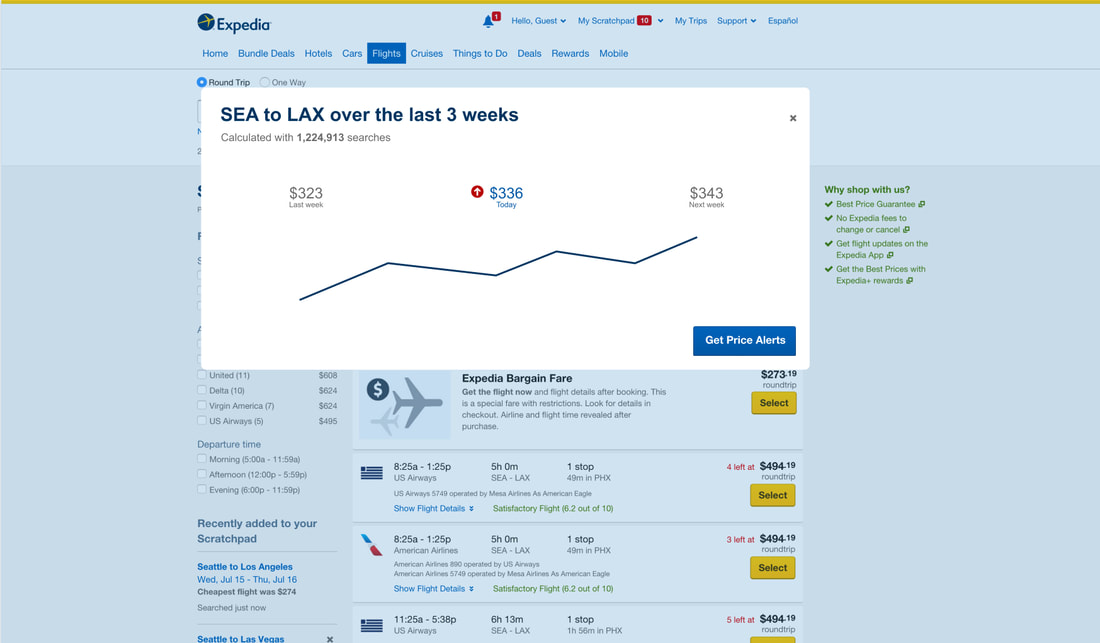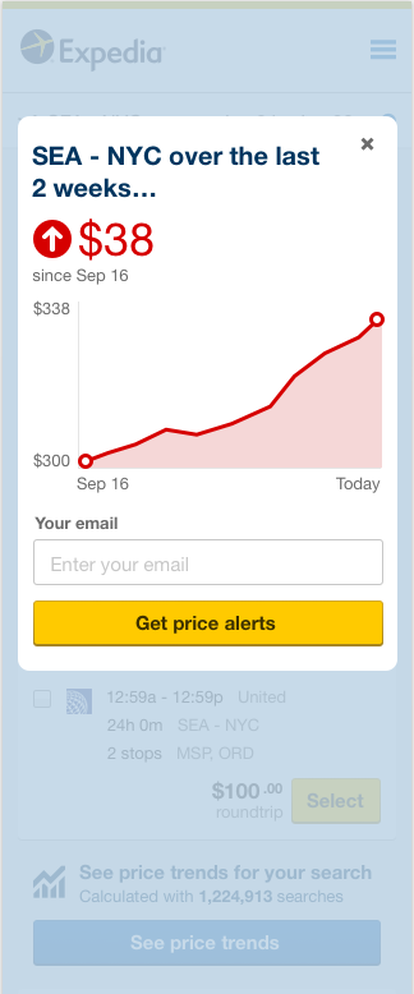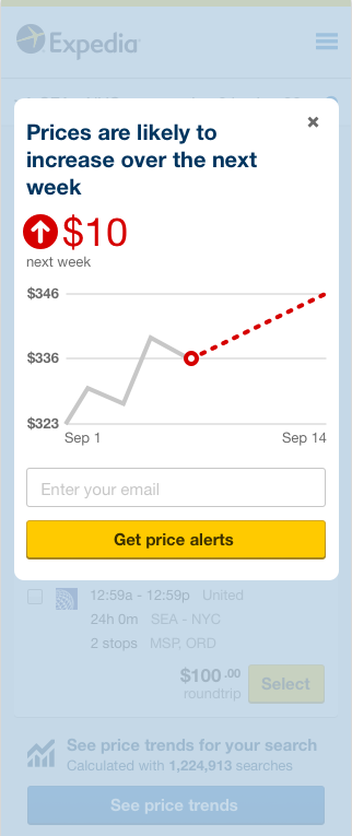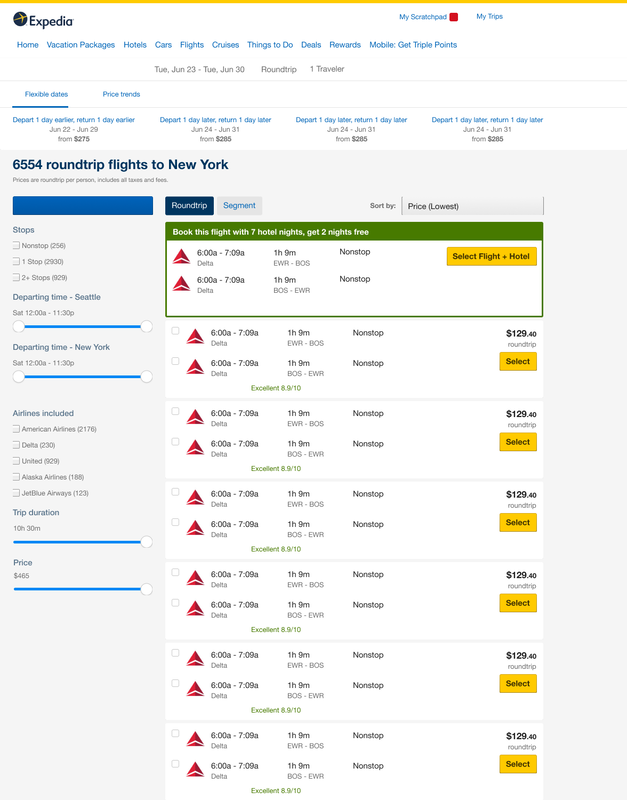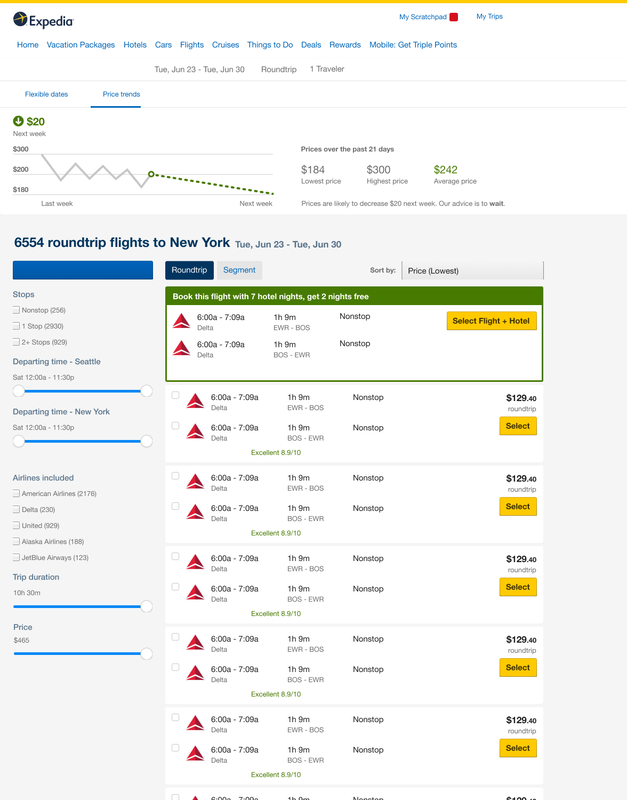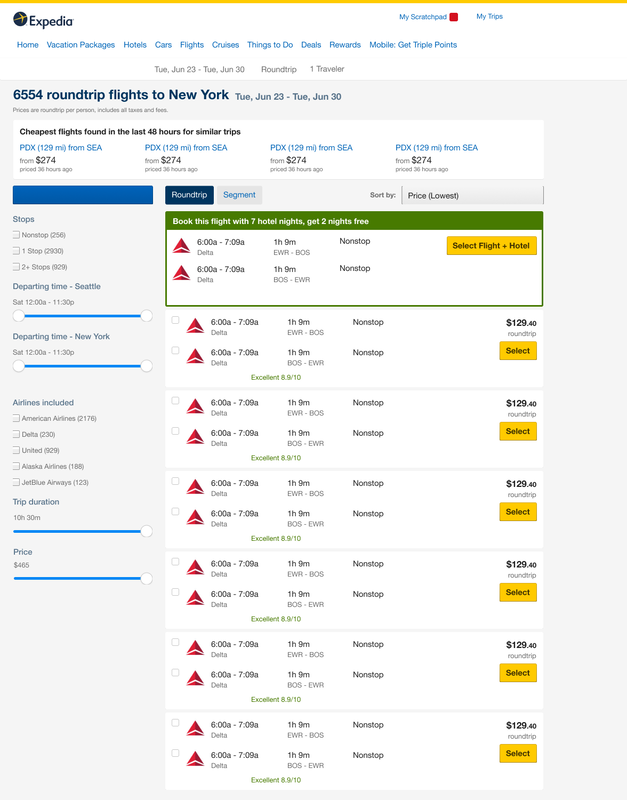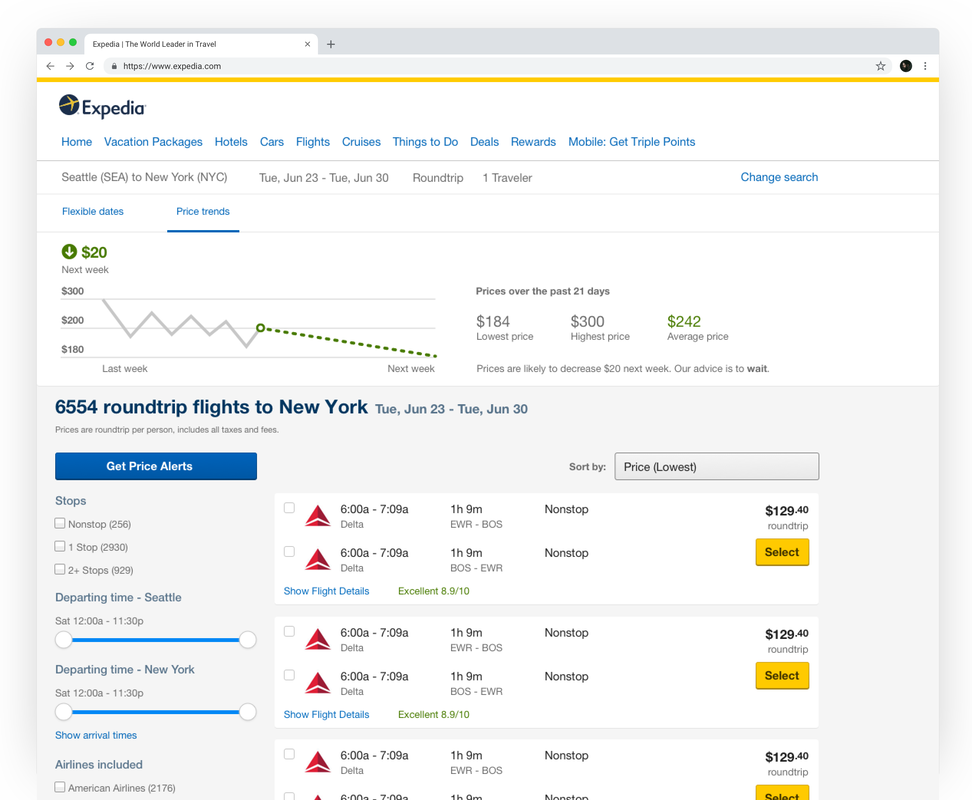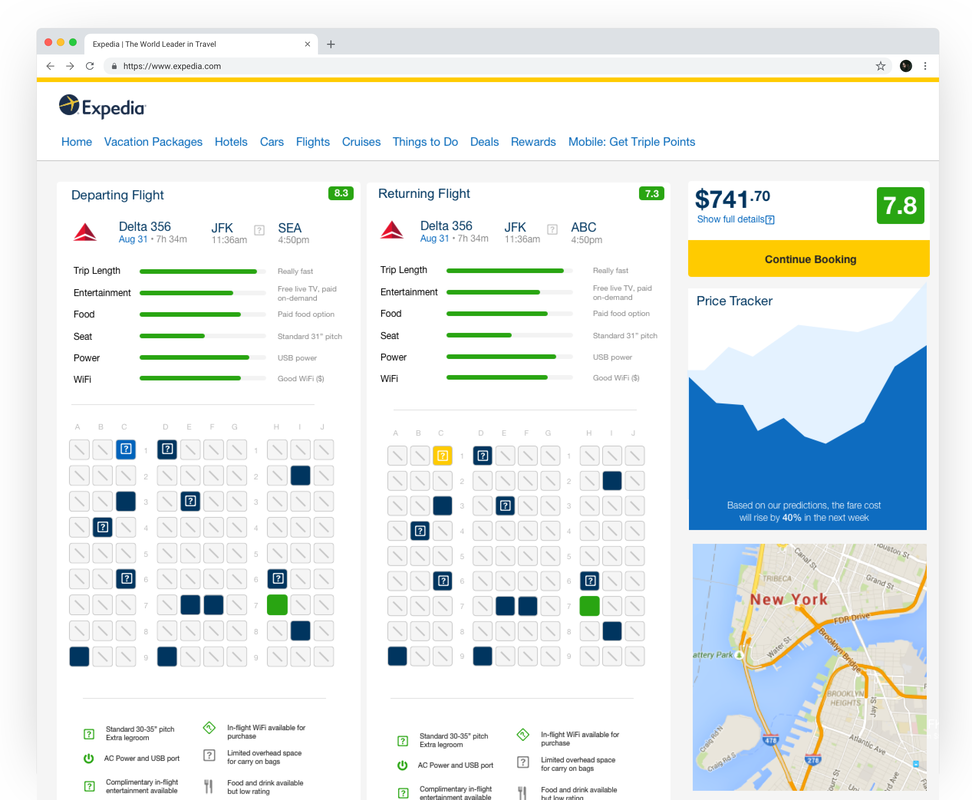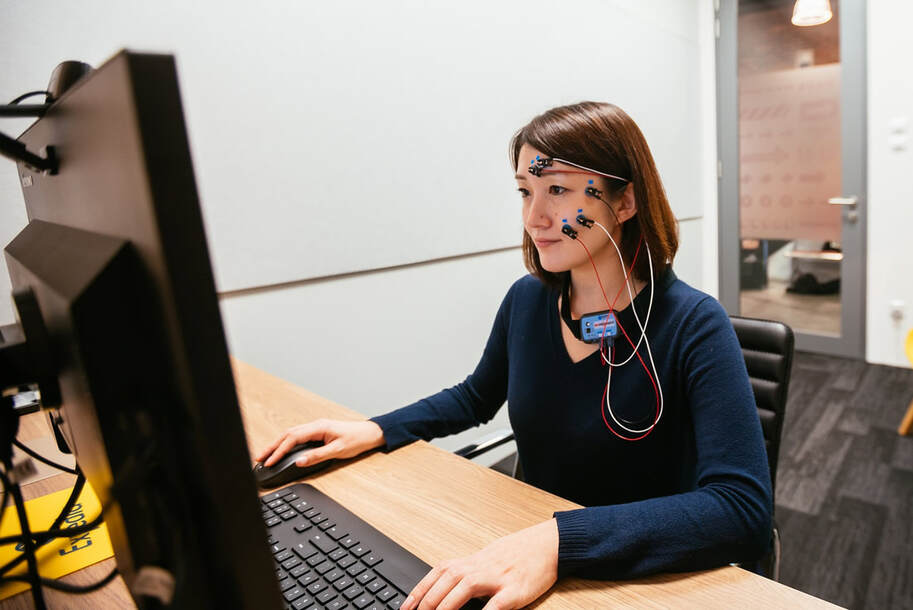|
Business Context 📉What sparked this design project was the introduction of Kayak's Price Prediction feature. Located in the top left of their desktop experience, this feature provided recommendations on booking windows for flight purchases. Expedia sought to leapfrog with our own pricing features.
PROJECT GOALS
|
User Interviews 🙋User interviews and surveys were conducted in order to gain a better understanding of what data users would want when purchasing a flight. By collecting this information from users, we identified areas for improvement which informed both data sets and features for design.
RESEARCH INSIGHTS • User wanted a “Price trends” that will automatically aggregate pricing date for specific destinations based on Expedia historical data. • User wanted “Price prediction” that will calculate the probability of certain price changes over a given week. • User wanted ‘Save Search” where flyers can view and repeat previous searches without re-entering trip information. |
UX STRATEGYIf we make pricing more transparent, then users will have greater confidence to purchase, thus increasing total orders & organic repeat metrics. |
New Pricing Features UI Design 📊
|
|
Price Trends UI Design
This feature takes Price Trends to the next level by integrating more data and smart predictive analytics to calculate the probability of certain price changes over the next week. Drawing from existing data and real-time insights regarding airline inventory and industry booking trends, Expedia's new Price Prediction feature will surface actionable recommendations for travelers by indicating the best time for them to book based on how prices for a given flight search are expected to increase or decrease over time. In the future, it will also provide customers with recommendations about current fares available along with predictions about how quickly certain flight fares and options will likely sell out. |
Saved Search Feature
|
User Testing Lab Sessions 🔎 |
|
To ensure the designs were understandable and actionable, the team spent extensive time in the Expedia Usability Lab. The two primary technical capabilities of the labs include eye tracking and electromyography (EMG) technology.
We had the participant click through a live prototype of the design, then track the changes in the EMG readings to understand the real-time impact that the experience is having on the subject as they go through the booking process. |
|
USER TESTING SUMMARY
|
|
Hypothesis
Visually engaging designs that:
Methods
|
|
Better Experience,
|

